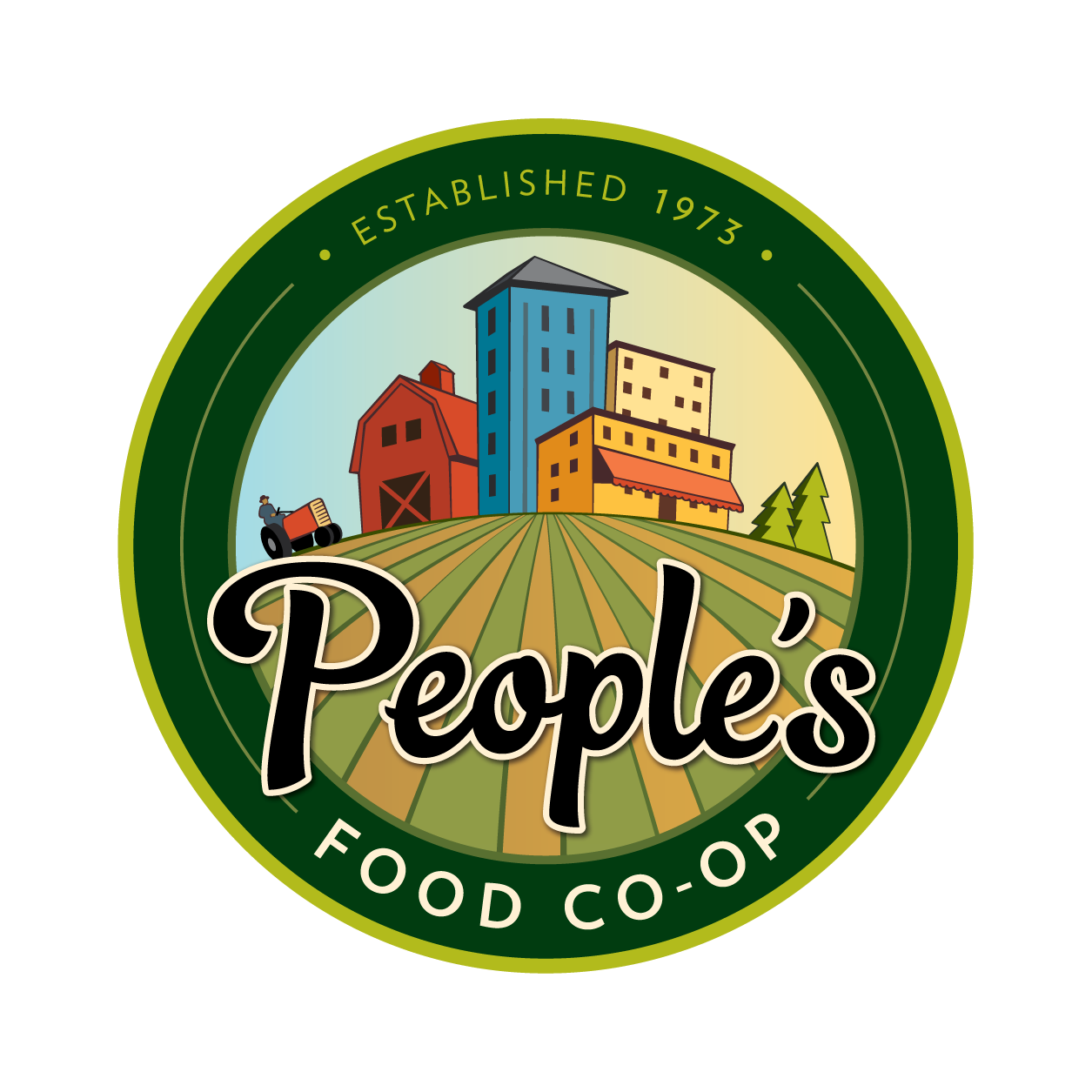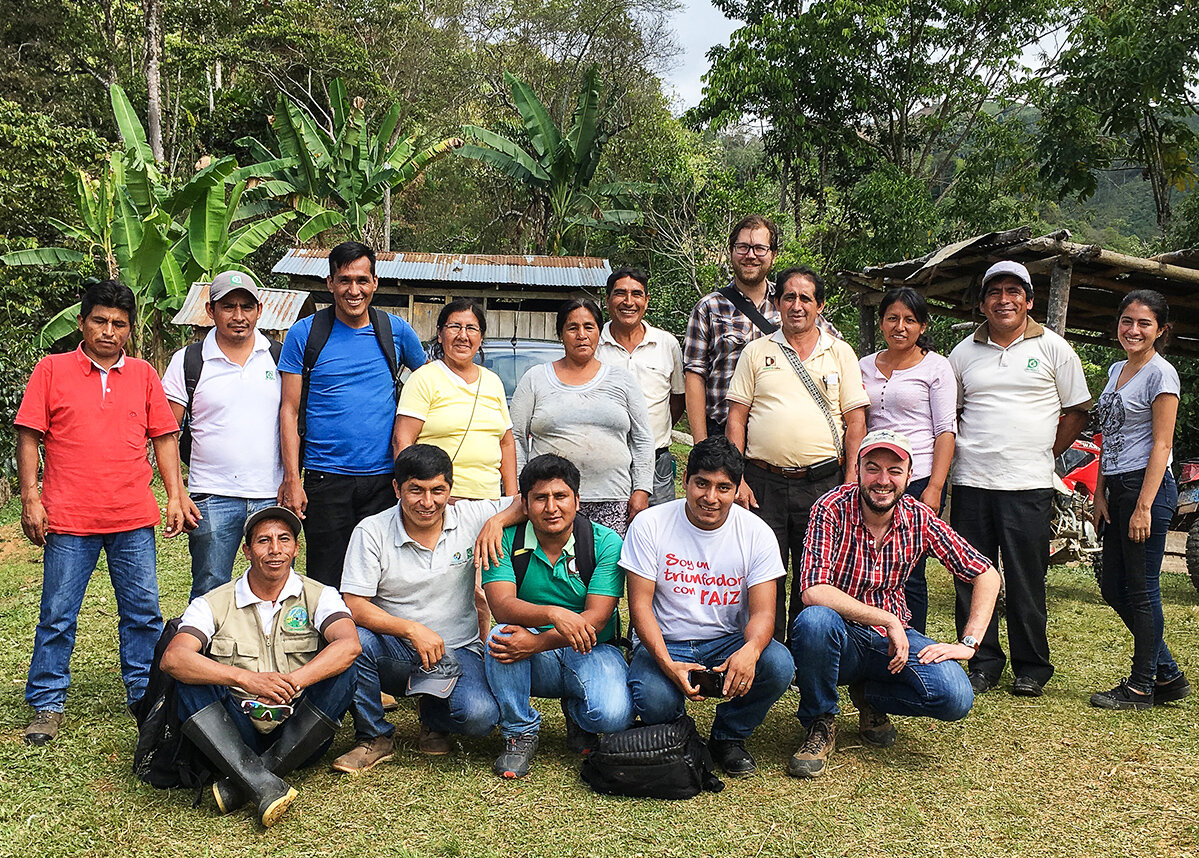Peace Coffee
Pangoa Cooperative farmers in Peru, 2017. Photo courtesy of Peace Coffee.
Peace Coffee has been around since 1996. According to Account Manager Kyle Feldman, the company started almost by accident. The Institute for Agriculture & Trade Policy (IATP) in Minneapolis hosted a delegation of Mexican coffee farmers for a conference in Minnesota on fair trade. At the end of the conference, one of the farmers said, “This is all great, but I haven’t sold a single coffee bean here.” The IATP people were encouraging, sure that a buyer would turn up eventually.
The following year the principals at IATP got a call from the port authorities in New Jersey: “We got your shipping container of Mexican coffee here. Where do we send it?” IATP took out a mortgage, bought the coffee, and scrambled to get it roasted and delivered to co-ops and small markets. At the end of the day they had a small profit. The next coffee they sold was Guatemalan. Some of the proceeds from that coffee went to support Guatemala’s peace process (they worked with Guatemalan civil rights worker Rigoberta Menchú) and Peace Coffee was born.
PFC has carried Peace Coffee since the 1990s. Rochester store manager Karla Meyer remembers driving up to the Twin Cities to pick up an order. “We’d run out and decided to save on the shipping,” she says.
They were the first 100% organic and fair trade company in the United States. “Twenty years ago,” Kyle notes, “we were the weird hippies. Now you can go into Target and buy our coffee.” Peace Coffee is happy to see the expansion of their coffee into the mainstream marketplace. “Our business is to help small-scale farmers find markets for their coffee.”
The company now has 25 employees working in the warehouse and at least as many in the Peace Coffee retail outlets. They’re still weird hippies though. Half of the coffee deliveries done in the Twin Cities are done by bicycle. Bike delivery rider Jeff stops to chat. He’s biked to La Crosse in the past and would be happy to deliver to PFC.
Peace Coffee’s network of grower cooperatives has grown as well. Besides Mexico and Guatemala, they source coffee from Africa, Peru, Sumutra. They work only with grower cooperatives. The individual farms in these co-ops are tiny; the average farm size is less than 11 acres.
Peace Coffee delivery driver Jeff with his ride.
Rusty coffee
Recent stories in the media report that coffee rust continues to plague growers in Central America. Coffee grows best at higher elevations with cool temperatures. As the climate warms, there is less arable land suitable for coffee cultivation.
Coffee rust has been spreading in the region as heat-stressed plants are more susceptible to the disease. Peace Coffee originally responded to the crisis with a coffee rust fund, donating 5¢ per pound to co-op farmers affected by the disease. But as Kyle notes, “Rust is only one symptom of the overall problem of climate change.” So Peace Coffee reconfigured its efforts. Their Carbon, Climate, and Coffee Initiative seeks to address climate change issues by encouraging organic practice, healthy soil, and carbon sequestration. From 2014 to 2017 Peace Coffee and its partners raised $650,000 for projects in Latin America, such as centralized and improved compost production, field renovation, and technical trainings in regenerative, organic practices.
Peace Coffee’s marketing director Mel Meegan says that the spread of coffee rust “has been a wake up call for the coffee industry. There’s more scientific funding for the study of cucumbers, for example, than for the coffee plant.”
Caffeinated infrastructure
Fair trade brings a modicum of profit to small farmers, and the farmer cooperatives plow that profit back into the business. With time, Mel notes, the sorts of projects the co-ops pursue change. When she started with Peace Coffee in the 1990s, the cooperatives worked on bringing electricity and schools to their communities. Now the projects have shifted to better training for the farmers. Coffee has become more of a consumer item in the producing countries and the co-ops are putting in their own roasters and cafes for the expanding local and tourist trade.
Peace Coffee has recently started working with cooperative growers in the Democratic Republic of the Congo. There, in a manner similar to their beginnings with Guatemalan growers, Peace Coffee worked with communities struggling with the aftermath of war. The first profits for the growers went to replace the roofs of houses blown apart by years of war in that country.
This article originally appeared in the Spring 2018 issue of the Co-op Shopper.


